The history of trulli
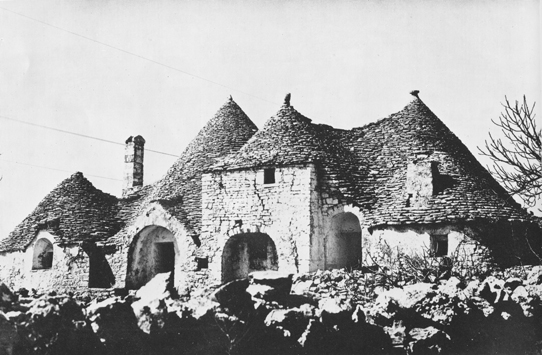 The very first trulli date back to prehistoric times. At that time, inhabited settlements and tholos, which were typical constructions used, in particular, to bury the dead, were already present in the Itria Valley.
The very first trulli date back to prehistoric times. At that time, inhabited settlements and tholos, which were typical constructions used, in particular, to bury the dead, were already present in the Itria Valley.
The trullo (plural trulli) was a type of rural building that was very common in the Murgia dei trulli region, a plateau located between the cities of Bari, Brindisi and Taranto in the Puglia region of southern Italy. This was literally a hut with walls and a dome made from dried stone, which housed a little area used for living, the entrance to which was covered by a pediment. There were one or two smaller rooms for sleeping at night or cooking and heating, which opened onto the main room with a keyed arch.
Depending on the situation, the trullo could be a temporary or seasonal residence, or a permanent dwelling for peasants and agricultural workers. There are examples scattered across the countryside, but there is also a real cluster of them in Alberobello in the province of Bari. The area with the most trulli is the Itria Valley, between Alberobello, Locorotondo, Cisternino and Martina Franca.
The trullo was an eminently rural type of building. With its thick walls and inability to accommodate multi-storey structures, a significant amount of floor space was wasted and, for this reason, it was not well-suited to high-density areas, despite the fact that being built with small stones made its shape flexible and adaptable, which was particularly valuable in urban spaces where space was at a premium.
Rooms beneath the trullo of varying sizes, which were augmented with underground passages and recesses, could be joined together in multiple ways to satisfy simple or complex needs. It was possible to build trulli without spending a lot of money, thanks to locally sourced materials. But there were drawbacks : the enormous impact of load-bearing walls on the ground, the inability to build multi-storey structures, the need to cover every space with a cone, which required hundreds of hours of skilled, painstaking labour.
In the countryside, trulli were built individually or in pairs, in groups of three, four or five, or sometimes in large farms (masseria, pl. masserie) with a dozen, or even two dozen, domes, but they never housed more than one rural family.
Where are the trulli?
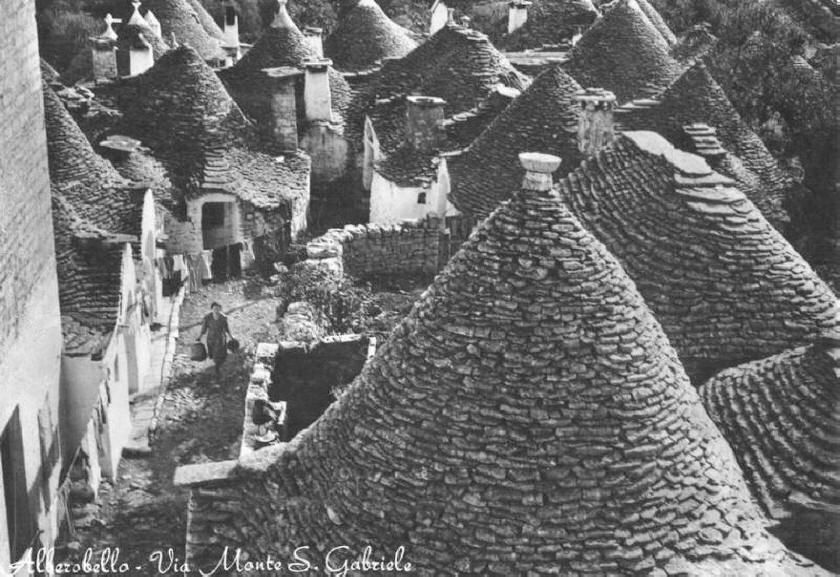 The oldest trulli, which today are found in Alberobello, date back to the end of the 14th century : during this period, what now appears to have been uninhabited land, was allocated by Robert of Anjou (the Prince of Taranto and the King of Naples from 1309 to 1343) to the first Count of the city of Conversano. This lot of land was the reward from the noble descendant of the Capetian House of Anjou-Sicily for services rendered during the Crusades. As a result, the area was populated once more, welcoming entire populations from nearby settlements, such as Noci, for example.
The oldest trulli, which today are found in Alberobello, date back to the end of the 14th century : during this period, what now appears to have been uninhabited land, was allocated by Robert of Anjou (the Prince of Taranto and the King of Naples from 1309 to 1343) to the first Count of the city of Conversano. This lot of land was the reward from the noble descendant of the Capetian House of Anjou-Sicily for services rendered during the Crusades. As a result, the area was populated once more, welcoming entire populations from nearby settlements, such as Noci, for example.
However, according to some studies, the first rural settlements sprang up along the two banks of the river (which later fell underground) around the year 1000. Little by little, the dwellings came together, until they formed real villages, which became known as Aja Piccola and Monti.
The dry construction method (without mortar) for the trulli was imposed on the new settlers so that the dwellings could be taken apart quickly : this was a strategic way to avoid taxes on new settlements imposed by the Kingdom of Naples, as well as a good way to remove hesitant owners. Despite this, most historians agree that this construction technique would have depended on the geographical conditions of the area first and foremost, where the limestone used for construction was abundant.
During the middle of the 16th century, the Monti area was already home to around forty trulli, but it was only in approximately 1620 that Alberobello became an independent settlement from Noci, with its population reaching approximately 3,500 near the end of the 18th century. In 1797, the village earned the title of royal city, which was bestowed to it by the King of Naples, Ferdinand IV of Naples. Its current name comes from the medieval Latin used in the region : ‘silva arboris belli’.
Most of the trulli are found in the Itria Valley, a territory that coincides with the southern portion of the high plateau of Murgia, which includes the municipalities of Alberobello, Locorotondo, Cisternino and Martina Franca. In this plain, which is criss-crossed by a network of dried-stone walls (parietoni) that outline vineyards and olive groves or border local roads, trulliare omnipresent, both in the dispersed habitat and the towns (hence the name Murgia dei trulli).
Materials and usage
Depending on the region, the material used for construction could be compact limestone or white tuff.
In areas with compact limestone, builders found either thick beds of stone, or thin beds with covering slabs at ground level (chiancharelle or chiancaredde in the local dialect, as in Alberobello). This stratification of hard limestone had the advantage of making the size of the bed faces irrelevant.
Preliminary digging of a cistern (cisterna), which was essential in this dry region, provided the initial load of stones.
These materials were typically used a seco (dry, or without mortar), except for the keystones, which were bound with lime mortar, the broken barrel vault or dome above the cistern on which the floor of the house rested in many cases.
Walls
The walls were mounted directly on the exposed layer of rock, possibly after cleaning the humus. The thickness of load-bearing walls ranged from 0.8 metres for the thinnest to 2.7 metres for those in Trullo Sovrano.
Their height (up to the beginning of the arch) ranged from 1.6 metres to 2 metres. Their outer face had a slope of 3 to 5%.
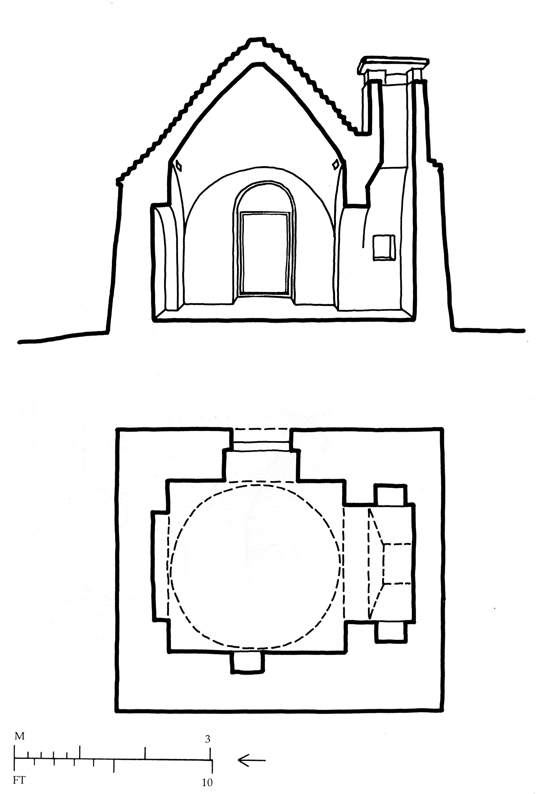 Layouts
Layouts
There was the basic trullo, a circular building that was most often used as temporary shelter for cattle, feed or the peasant themselves.
There was the square trullo, which was either isolated or part of a group of three, four or five trulli, which were arranged in a row or a pile and formed a unit in which each trullo corresponded to a different room : kitchen, bedroom, stable, room for storing tools or food, oven, cistern. In the latter case, a single domed room came to encompass the other domed rooms over time, in order to form a complex dwelling.
Coverings
The unique feature of trulli lies in the conical shape of their coverings (roofs). On the outside, these cones comprise a covering of slabs, or chiancarelle, which were arranged in concentric lines and inclined slightly towards the outside to prevent rainwater from getting in. Their exposure (the uncovered portion) is more obvious in the less sloped parts of the domes.
The slabs are placed on the upper surface of a cut-stone vault known as a chianche, a vault that is either corbelled and covered with a final slab (without any keying effect), or keyed and blocked at the time by a stone known as the serraglia (the keystone).
At the beginning of the vault, wooden beams were used to support indoor scaffolding during construction. These beams, which were later used to hang tools and tableware, could also be used to support a floor (tavolato) that could be accessed by a wooden ladder and used as an attic (solaio) to store grain, dry food and flour, or for extra space for sleeping. Another function of this floor was to prevent heat from rising through the cone when cooking.
The covering cone has a curvilinear generator (rather than a rectilinear generator), except in the most recent examples. It expands at the base to also cover the corners of the building, when it does not continue past that to cover the underground passages – alcove(s), fire room (camino di fuoco), entrance porch – that join the main room and which lead into it.
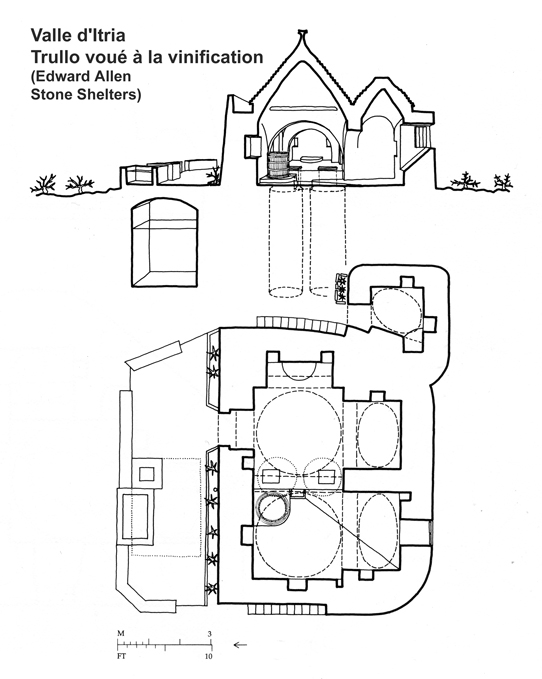 Pinnacles
Pinnacles
A limestone or sandstone pinnacle (pinnacolo) adorns the top of the cone. These sculpted pinnacles, which come in various shapes (disc, ball, cone, basin, polyhedron or some combination of these), are not symbols, but rather the signature of the mason/stonemason who constructed these buildings.
It is also believed that the varying degree of ornateness of the pinnacle more or less reflected the affluence or social standing of the family whose home it adorned (the more ornate the pinnacle, the more expensive it was). There was also competition between roofers, with each of them striving to surpass the others with the elaborate nature of their pinnacles. Beyond these explanations, it is crucial to note that the pinnacle weighed on the cone and, in doing so, reinforced the stability of the last bases.
Some cones were truncated and ended with a large, circular slab placed on the cap. An external staircase, which was set out in the chiancarelle, made it possible to access it: this is for trulli that were intended for storing hay.
Openings
Openings were rare outside of the obligatory entrance. In most cases, this is indicated by the presence of a pediment covered with a slab saddle roof, which is subtly connected to the central cone. This saddle roof may be more or less pronounced, depending on whether the entrance is preceded by a deep or shallow external embrasure. This sometimes contains two stone benches.
A small window set aside in the façade allowed scant daylight or air inside. In fact, trulli can be very dark inside. A small window set aside in the cone provided a small amount of light and air in the space above the main floor.
A clay plaster applied to the interior walls (as well as the hollows and interstices within the wall) allowed them to breathe (this was no longer true when a mortar or cement plaster was applied).
Interior layout
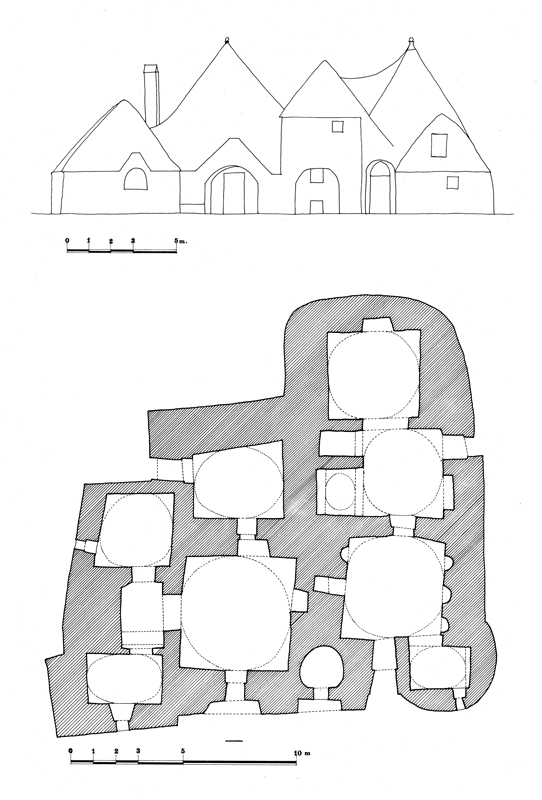
Rainwater was carefully collected from the conical roof of each trullo and directed towards a cistern dug beneath the house or an adjacent courtyard.
The trulli or residential units had a chimney (camino, or fucarile in dialect) in the form of an open hearth, the duct for which crossed the dome and was extended by a masonry stump (comignolo) topped by two mechanical tiles arranged in a saddle-roof style or a square tile placed on columns. In some cases, the stump was topped off by a wooden flap that was raised or lowered depending on the direction of the wind (comignolo con tavoleta in bilico).
The trullo was difficult to heat by design : the walls were too thick and hot air rose within the cones.
Another solution for heating : a central heater with embers that heated the room, with a wooden box on top that made it possible to dry clothes (an example is preserved at the local museum – Museo del Territorio – in Alberobello).
In summer, the thickness of the walls and the height of the vaults kept the interior cool during the day, even during warm weather. However, in the evening, because the temperature outside dropped, the stone, which warmed up during the day, began to release the built-up heat, so the inside was stifling due to the lack of ventilation.
On the other hand, the nights could be cold during certain months (April and October), even when the days were warm. In winter, the walls stayed cold and trapped the humidity from people breathing and cooking and it was hard to get warm, even in front of the fire. As a result, residents left the door open during the day to let the humidity escape and spent more time outside than inside.
In Alberobello, certain household chores were done outside, in the streets, as we can see in postcards and photos from the 1950s and 1960s: laundry, hanging out laundry, sewing, knitting, shelling peas, etc.
Meanings of the painted symbols
Christian symbols were sometimes painted on certain residential domes in whitewash ( trulliused for stables or weaving were exempt). The central cone of the Trullo Sovrano in Alberobello was endowed with a religious symbol in this manner in the first third of the 20th century.
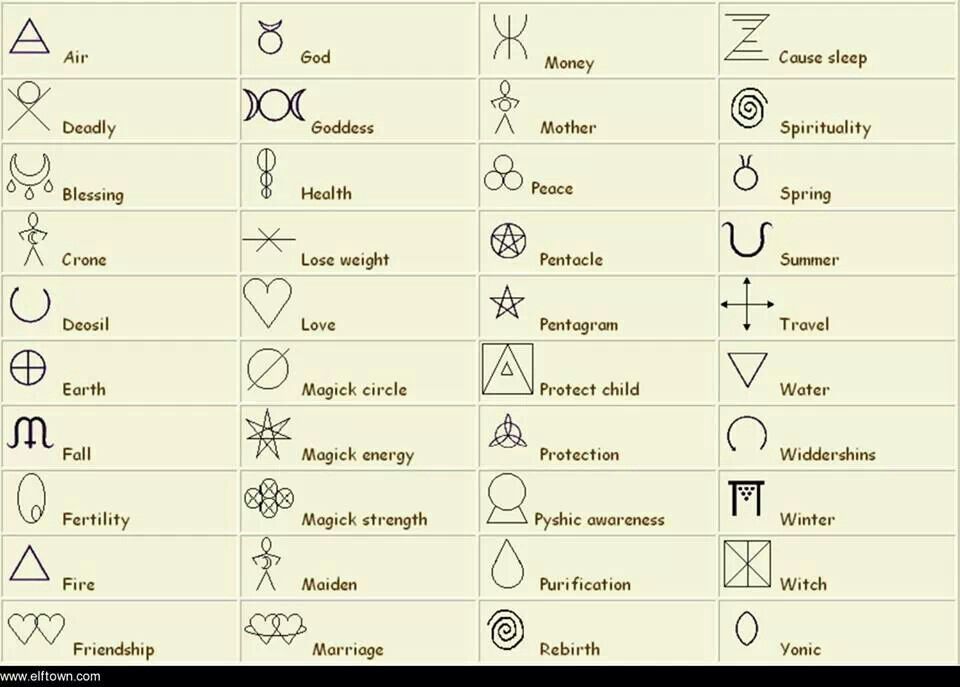
Trulli and tourism
The past decade has seen many farms or trulli in the Itria Valley being restored and converted into second homes or holiday rentals. Ten years ago, restoring the roof of a trullocost 3 million lire (around €1,500). In 2009, it cost €15,000; in 2018, €20,000.
- In 1990, a trullo was offered with land because nobody wanted it.
- In 2000, that trullo was sold for €10,000 with two cones requiring renovation + 45 m2 of land
- In 2010, the trullo that was sold for €10,000 in 2000 was sold for €50,000
- In 2018, the increase in prices is still evident and represents around 5% each year.
The reasons are simple :
- tourism in Arabic countries has dropped off sharply because of the risks
- tourists are more and more seeking unusual locations
- trulli, which are listed as UNESCO World Heritage, cannot be built new anymore and are becoming rarer… Demand is greater than supply
In Alberobello, locals who still live in old-fashioned trullido so because they do not have enough money to move, or because they run guest houses and welcome tourists.